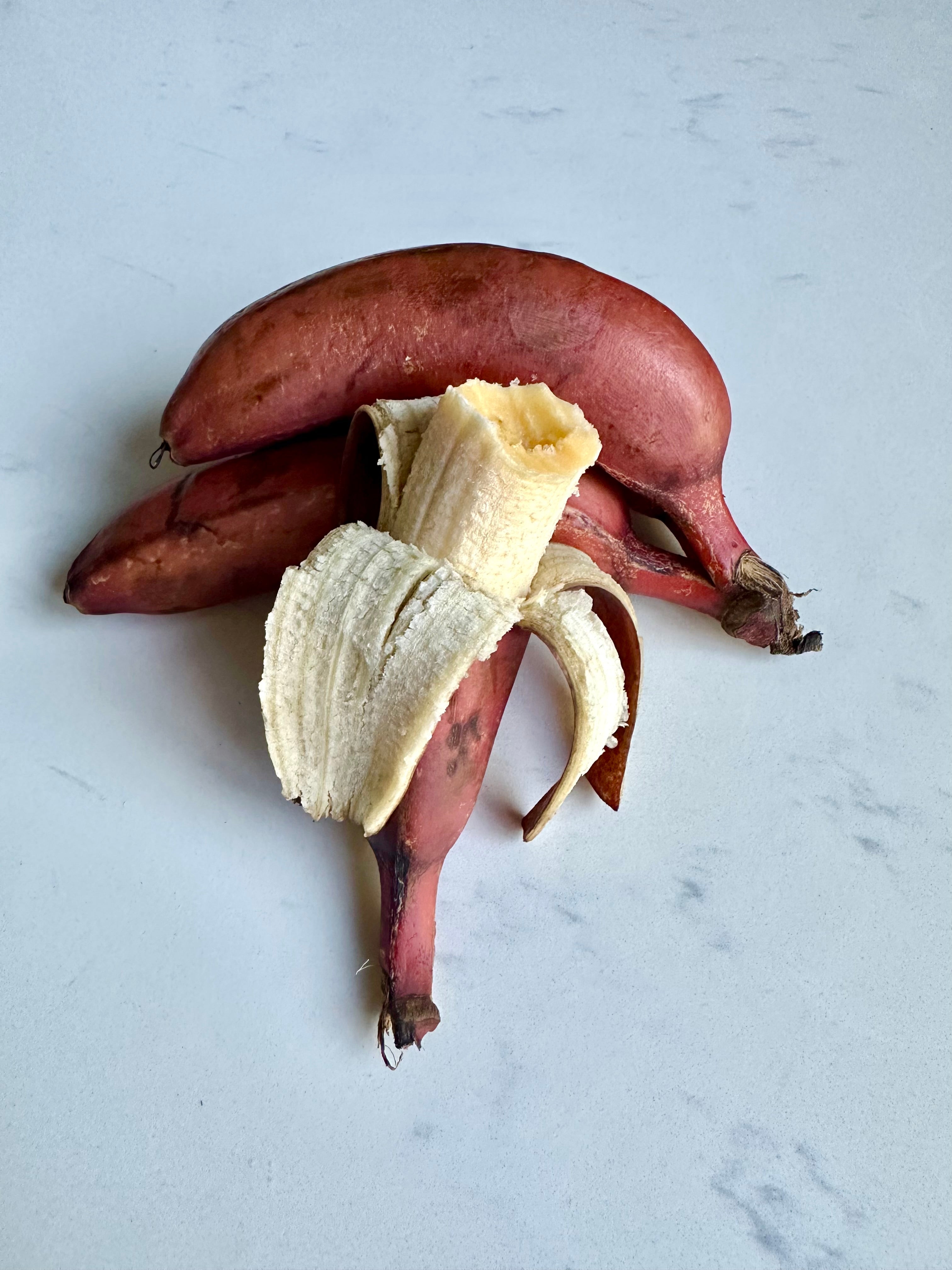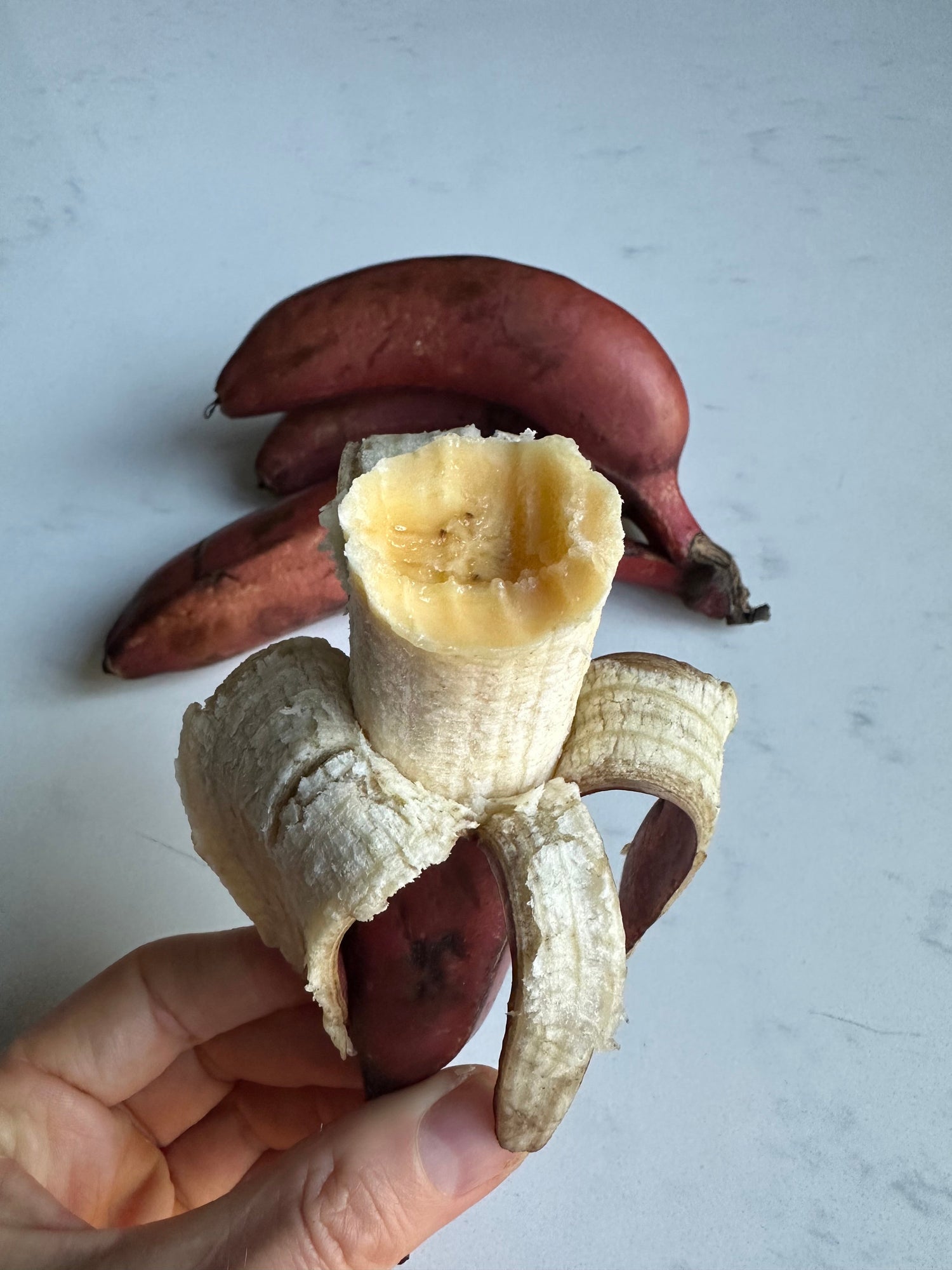Banana - Red Dacca (super rare)
- Regular price
-
$190.00 - Regular price
-
- Sale price
-
$190.00
Couldn't load pickup availability
Red Daca is a red-skinned variety showcases a rich maroon-red hue upon ripening. When fully mature, these bananas offer a delightful blend of sweetness and creaminess, occasionally accompanied by subtle berry notes. Their culinary potential extends beyond fresh consumption – they can be baked, fried, dried, and even toasted when still unripe. Red bananas stand out for their elevated content of beta carotene and vitamin C compared to their yellow counterparts.
These banana trees exhibit a growth height ranging from 4 to 5 meters, or potentially taller under optimal conditions. The pseudostems of these trees present an appealing reddish tint, enhancing their visual allure.
Red Dacca bananas can be grown outdoors in the Auckland and Northland region, provided they are in a sheltered, frost-free location. It's important to mulch the base of the plant. There is documentation of successful Red Dacca banana cultivation in Auckland. However, those wanting to grow this banana in areas south of Auckland might require a larger greenhouse or a very sheltered, warm spot.
Banana Plant Care Tips
-
Sunlight: Banana plants thrive in full sun, so it's best to plant them in an area that receives at least 6-8 hours of direct sunlight per day.
-
Soil: Banana plants prefer well-drained soil that is rich in organic matter. A pH range of 5.5-7.0 is ideal for optimal growth.
-
Watering: Banana plants require regular watering, especially during the growing season. Keep the soil moist, but not waterlogged. Overwatering can cause the roots to rot.
-
Fertilizer: Banana plants are heavy feeders and require regular fertilization. Apply a balanced fertilizer every 4-6 weeks during the growing season.
-
Mulching: Mulch around the base of the plant to help retain moisture and suppress weeds.
-
Pruning: Remove any dead or damaged leaves and suckers (smaller offshoots that grow from the base of the plant) regularly. This will help promote healthy growth and prevent disease.
-
Pests and diseases: Banana plants are susceptible to a variety of pests and diseases, so it's important to monitor the plant regularly for any signs of infestation or disease. Common pests include aphids, spider mites, and mealybugs, while common diseases include Panama disease and Sigatoka leaf spot.
-
Harvesting: Bananas are typically harvested when they are fully ripe and the skin is yellow. Cut the bunch off the plant with a sharp knife and allow the fruit to ripen further at room temperature.













